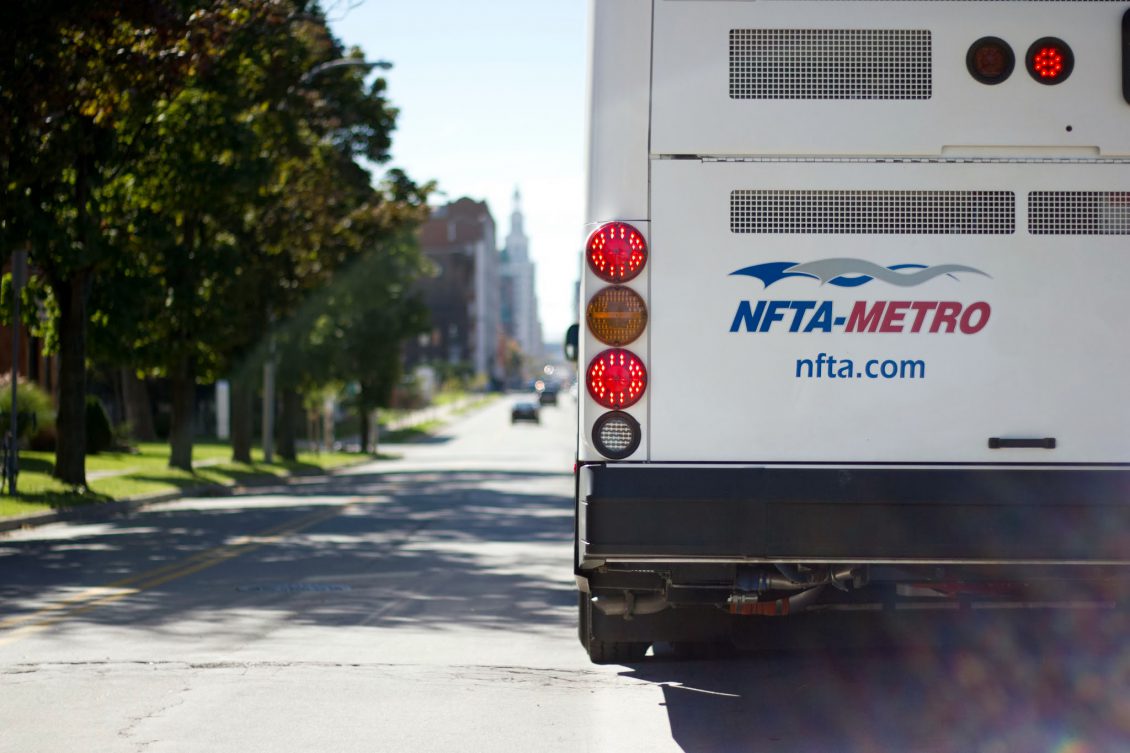More People Taking Public Transit and Walking to Work on the BNMC Than Ever Before
Percentage of Employees Driving Alone to Medical Campus Drops, NFTA Bus & Rail Numbers Increase as BNMC Expands Efforts to Provide Alternative Transportation Options
More than 15,000 people work and study across the Buffalo Niagara Medical Campus each day. As this number has nearly doubled over the past decade, the BNMC team actively works to create a safe, accessible destination while building a sustainable transportation system for employees, neighbors, and the community.

BNMC’s most recent employee survey shows that the percentage of employees driving alone has dropped to 80%, down significantly from 88% in 2012 and 84% in 2016. The percentage of employees taking public transportation has increased to 11%, up from 4% in 2012 and 7% in 2016. The percentage of employees walking to work is at 4%, a substantial increase from 1% in both 2012 and 2016.
Every several years, the BNMC team works with our transportation partners within the BNMC institutions to survey employees on how they get to work.
“We are definitely pleased with the direction our numbers are heading. We work very closely with our regional transportation partners to create convenient, safe, and affordable options for employees, patients, and visitors to get to the BNMC,” said Bill Smith, BNMC’s director of access and transportation. “Most recently, we partnered with NFTA to establish and pilot the first Corporate Pass Program, which allowed employers to provide a less expensive option for employees interested in riding the light rail to work.”
Recent workforce data on the BNMC showed an increase of employees who live within the City of Buffalo and in particular within the zip codes touching the BNMC. Our team also works closely with leaders from the BNMC institutions’ human resources and hiring teams, to ensure that we are continuing to increase access to job opportunities on the BNMC. In 2017, one-third of the new hires in our larger institutions were from the surrounding neighborhoods, and nearly 40% live in the city.

